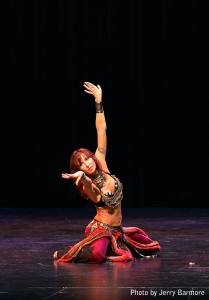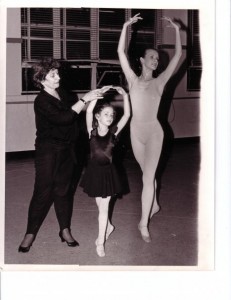 Have you ever been confused by the newer styles of belly dance? Let’s clear things up a bit, shall we? 4dancers contributor, Piper, is back again to sort things out by sharing information about some of the styles that are out there today. But first, some definitions:
Have you ever been confused by the newer styles of belly dance? Let’s clear things up a bit, shall we? 4dancers contributor, Piper, is back again to sort things out by sharing information about some of the styles that are out there today. But first, some definitions:
ATS = American Tribal Style
ITS = Improvisational Tribal Style
Fusion = blend of various styles of dance
Now, let’s hear from Karen:
I teach/perform my own tribal fusion style of dance, but I came out of a class that originally was American Tribal Style. What exactly is ATS? Long story short, ATS is a modern style of belly dance that was created by Carolena Nericcio, who formed Fat Chance Belly Dance in 1987 in the San Franciso Bay area.
It needs to be said that this category of belly dance should be credited to Jamila Salimpour. She utulized her knowledge of traditional folkloric dance and belly dance by presenting the now infamous Bal Anat production. It showcased dances from Algeria, Morroco, Turkey, Egypt, Syria and Lebanon. Thus – tribal style belly dance was born.
From Fat Chance and Carolena, many troupes have descended and created their own style.
Some of todays tribal troupes who have roots within ATS have now become what is known as Improvisational Tribal Style. ATS & ITS tend to be strictly performed by 2 or more dancers – thus, a troupe.
Both are done with cues from the arms or hands, so both are presented in an improvisational style. And there is something to be said about watching either style of troupes perform – the energy that is shared by the troupe is like no other.
And now, for fusion. Now personally, fusion is my favorite. Fusion is brought about by individuals pulling in their own unique style. Usually, this style is based on the other forms of dance the performer has studied. Fusion can be influenced by hip hop, African, modern, ballet, as well as traditional belly dance. But the key is always to respect the dance.
As with any dancer, it took me a while to find my own voice within tribal fusion. I felt in the beginning ‘oh – if I’m tribal, then I can’t do ‘X’; but the more I understood what fusion really was, the more I found myself. I study Egyptian style now, as well as going back to ballet. I take workshops with some of the best dancers (at least I feel are the best) – famous as well as the unknowns – and I walk away with more knowledge every time. I’m constantly trying to improve, and will always do so.







